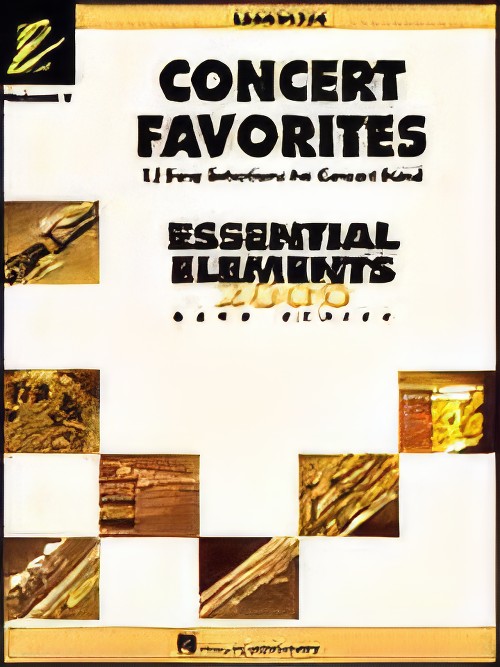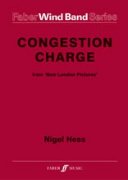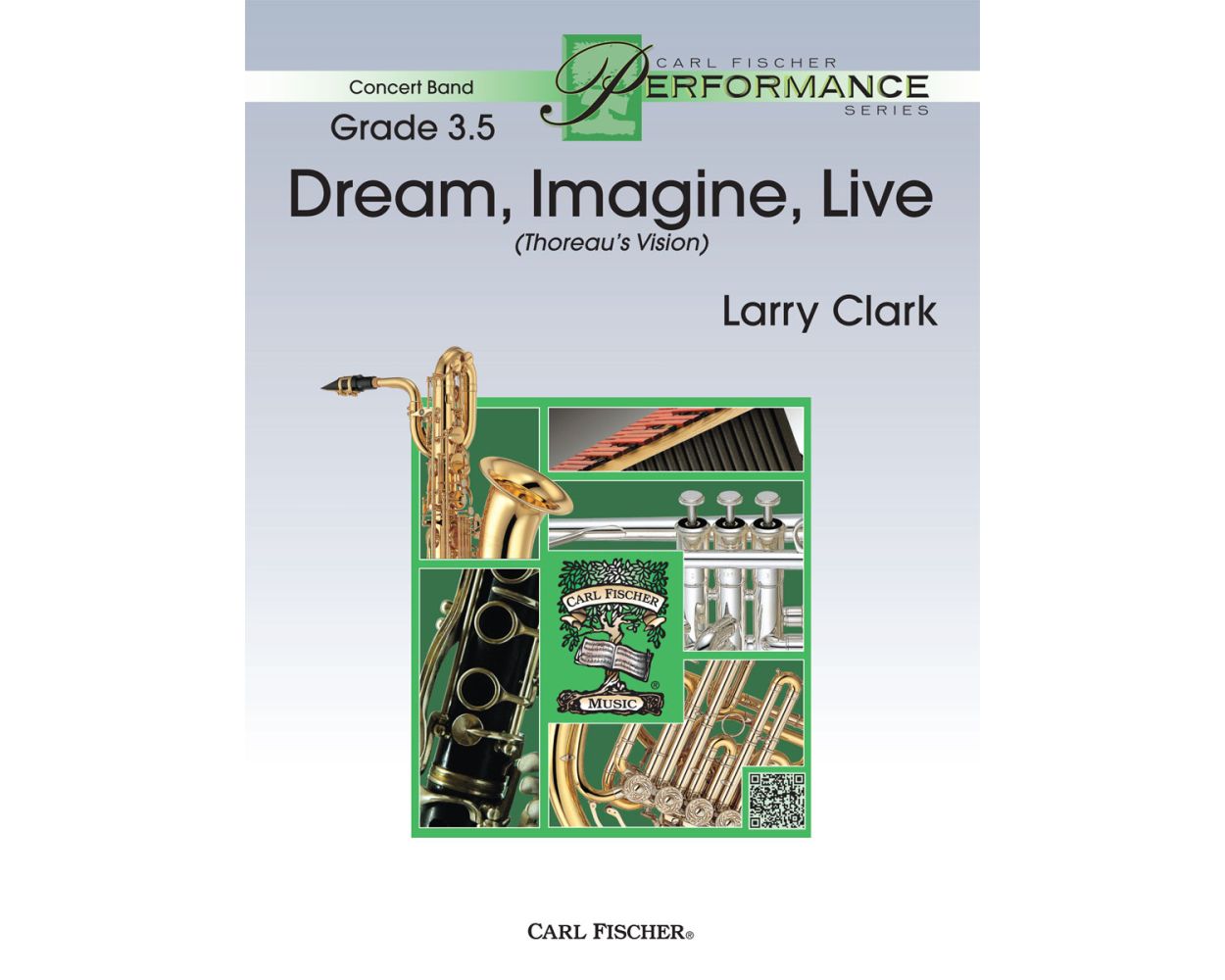Results
-
 £149.99
£149.99Concert Favorites Vol.1 Value Set - Sweeney, Michael
Score & 17 parts) For beginning concert band, but playable with just: Flute or Oboe; Clarinet; Alto Sax; Tenor Sax; Trumpet; F Horn; Bass line (Bassoon/Alto Clarinet/Bass Clarinet/Baritone Sax/Trombone/Baritone BC/Baritone TC or Tuba); Percussion & Keyboard Percussion. Includes: When the Saints Go Marching In; Let's Rock; Majestic March; Power Rock, Farandole; Jus' Plain Blues; My Heart Will Go On; Rainbow Connection; Supercalifragilisticexpialidocious; Do-Re-Mi; Drums of Corona; Laredo (Concert March); Pomp and Circumstance; Stratford March.
Estimated dispatch 7-14 working days
-
 £55.00
£55.00Congestion Charge (from New London Pictures) (Concert Band - Score and Parts) - Hess, Nigel
As with all modern cities, London is over-crowded with motor vehicles. London is the first major city in Europe to adopt a 'Congestion Charge', and this piece (with its stop and go traffic lights) is both racy and comical. Here are Londoners attempting to go about their business in the face of overwhelming odds..... This piece is the final movement Nigel Hess' 'New London Pictures' which represents elements of London in the 21st Century.Duration: 7.00
Estimated dispatch 7-14 working days
-
 £71.50
£71.50Thunderbolt Galop - Fred Huffer
Need a fun and fast "chaser" to close your concert? The "Thunderbolt Galop" is the perfect choice! Limited technical and range demands make this the ideal selection rehearse at a standard march tempo, then see just how fast your band can go in performance! Excellent material for any contest or festival performance, it's also well-suited as an encore for any concert. Your performers will thrill with seeing just how fast they can go! Accelerated fun from start to finish!
Estimated dispatch 7-14 working days
-
£72.95
Three Christmas Spirituals
Based on three famous African-American spirituals'Children Go Where I Send Thee, Rise Up Shepherd and Follow, and Go Tell It on the Mountain, arranger Andrew Balent weaves these beloved tunes into a concert rhapsody for the holiday season.
Estimated dispatch 7-14 working days
-
£29.95
Share My Yoke - Score and Parts - Joy Webb
Program NotesMajor Joy Webb has a unique and special gift for writing songs that achieve massive popularity, both for the purity of their musical integrity and for the depth of their poetic and literal strength. One of the members of The Salvation Army's 1960s phenomenon "The Joystrings," Joy Webb has a string of popular songs to her name, several of which contributed to the charts successes of enjoyed by the group. In more recent years, many of her tunes have found their why into instrumental repertoire.A prime example of Joy's remarkable gifting is her beautiful Share My Yoke. Although the deeply spiritual words of Share My Yoke may be unfamiliar to some, the sheer beauty of the melody is without doubt. The chorus is reproduced here to offer an insight into the song's meaning:Your slightest movement I will feel and understand.Share my yoke, and come the way that I must go,In our togetherness my peace you'll know.The world beholding us will see it's so.Calling for real sensitivity both from soloist and accompanying group, this is an extremely rewarding piece to play - and a moving listening experience for the audience.The arranger, Ivor Bosanko, who lives in California following retirement from the post of Territorial Music Director in The Salvation Army's USA Western Territory, is himself a respected songwriter, composer and arranger. He has produced this wonderfully sensitive and evocative arrangement of the song for cornet soloist and band. Already widely used and recorded in its original brass band form, this arrangement for concert band will undoubtedly be a useful and valuable addition to repertoire.
Estimated dispatch 7-14 working days
-
£5.95
Share My Yoke - Score only - Joy Webb
Program NotesMajor Joy Webb has a unique and special gift for writing songs that achieve massive popularity, both for the purity of their musical integrity and for the depth of their poetic and literal strength. One of the members of The Salvation Army's 1960s phenomenon "The Joystrings," Joy Webb has a string of popular songs to her name, several of which contributed to the charts successes of enjoyed by the group. In more recent years, many of her tunes have found their why into instrumental repertoire.A prime example of Joy's remarkable gifting is her beautiful Share My Yoke. Although the deeply spiritual words of Share My Yoke may be unfamiliar to some, the sheer beauty of the melody is without doubt. The chorus is reproduced here to offer an insight into the song's meaning:Your slightest movement I will feel and understand.Share my yoke, and come the way that I must go,In our togetherness my peace you'll know.The world beholding us will see it's so.Calling for real sensitivity both from soloist and accompanying group, this is an extremely rewarding piece to play - and a moving listening experience for the audience.The arranger, Ivor Bosanko, who lives in California following retirement from the post of Territorial Music Director in The Salvation Army's USA Western Territory, is himself a respected songwriter, composer and arranger. He has produced this wonderfully sensitive and evocative arrangement of the song for cornet soloist and band. Already widely used and recorded in its original brass band form, this arrangement for concert band will undoubtedly be a useful and valuable addition to repertoire.
Estimated dispatch 7-14 working days
-
£108.00
Panic Button (CB) - Paul Saggers
Panic Button was commissioned by Bert Van Thienen especially for 2022 World Music Contest in Kerkrade (NL). The composer was given complete freedom musically, however, he was given two conditions. First, it had to be an atypical work, a composition that puts the orchestra in a different perspective than the traditional repertoire and be suitable for both concert and competition stages. Second, it had to give the musicians the opportunity to go completely wild for a while. On the one hand, to shake off any stress and, on the other, to give them energy for the rest of the program. Enjoy!
Estimated dispatch 7-14 working days
-
£92.00
A Mother's Treasure (CB) - Jan De Maeseneer
A Mother's Treasure tells the musical story of the mother who sees her daughter grow up. As a little girl she is playing simple pieces that you will hear back in the trumpet part. Later she is in her teens when she go in search for some challenges, to herself as a musician and as a person. In the last part of the composition she finds peace and enjoys life that her mother has given her.
Estimated dispatch 7-14 working days
-
 £60.00
£60.00Messages of Christmas - Traditional
The Christmas season means different things to people around the world. For many, it presents an opportunity to express peace and goodwill towards others in various ways. The lyrics of the three melodies used in this arrangement are all specifically written to spread the messages of Christmas: Hark! The Herald Angels Sing, The First Noel, and Go Tell It On the Mountain.An uplifting holiday concert selection that expresses hope and peace.
Estimated dispatch 12-14 working days
-
 £71.00
£71.00"Dream, Imagine, Live"
The inspiration for this piece comes from one of Henry David Thoreau's most famous quotes - "Go confidently in the direction of your dreams! Live the life you've imagined." It was Thoreau's vision that we contemplate a simpler life and be deep thinkers about what we want our lives to be. The piece is divided into three distinct sections based on the same three-note motive. The first section is intense and bold, the second is introspective and lyrical and the third is dance-like, almost reminiscent of a Celtic folk song, in lilting in 6/8. This perfect contest or festival selection will highlight your band's strengths.
Estimated dispatch 12-14 working days
